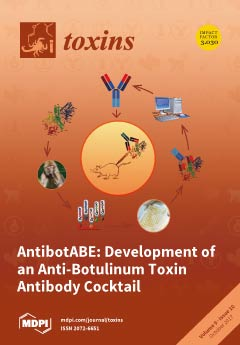Homeobox proteins, a class of well conserved transcription factors, regulate the expression of targeted genes, especially those involved in development. In filamentous fungi, homeobox genes are required for normal conidiogenesis and fruiting body formation. In the present study, we identified eight homeobox (
[...] Read more.
Homeobox proteins, a class of well conserved transcription factors, regulate the expression of targeted genes, especially those involved in development. In filamentous fungi, homeobox genes are required for normal conidiogenesis and fruiting body formation. In the present study, we identified eight homeobox (
hbx) genes in the aflatoxin-producing ascomycete,
Aspergillus flavus, and determined their respective role in growth, conidiation and sclerotial production. Disruption of seven of the eight genes had little to no effect on fungal growth and development. However, disruption of the homeobox gene AFLA_069100, designated as
hbx1, in two morphologically different
A. flavus strains, CA14 and AF70, resulted in complete loss of production of conidia and sclerotia as well as aflatoxins B
1 and B
2, cyclopiazonic acid and aflatrem. Microscopic examination showed that the Δ
hbx1 mutants did not produce conidiophores. The inability of Δ
hbx1 mutants to produce conidia was related to downregulation of
brlA (bristle) and
abaA (abacus), regulatory genes for conidiophore development. These mutants also had significant downregulation of the aflatoxin pathway biosynthetic genes
aflC,
aflD,
aflM and the cluster-specific regulatory gene,
aflR. Our results demonstrate that
hbx1 not only plays a significant role in controlling
A. flavus development but is also critical for the production of secondary metabolites, such as aflatoxins.
Full article






